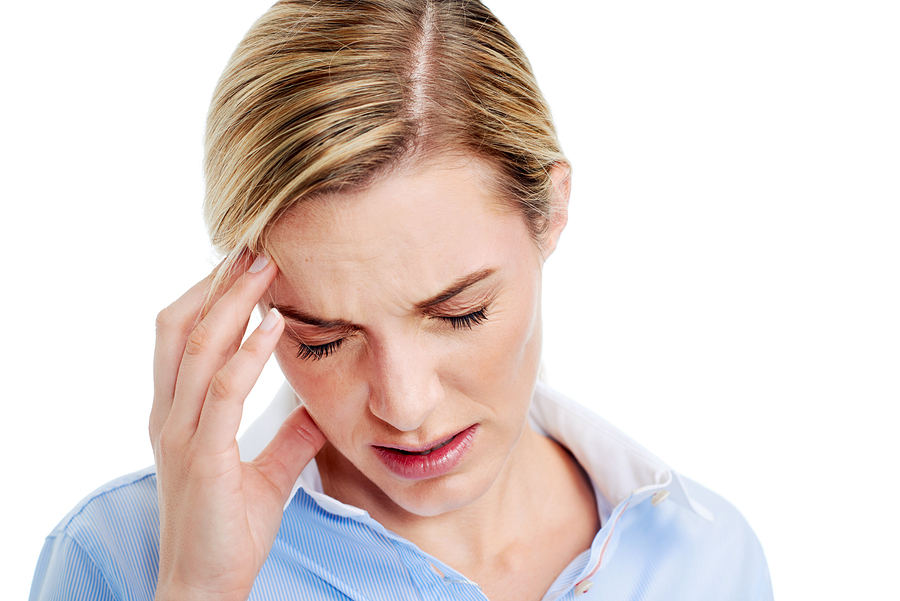- Make It Yourself Lavender Heart-Shaped Bath Bombs!
- 20 Things You Never Knew About “Down There”
- 12 Best Foods For Those Suffering From Arthritis Pain
- 12 Personal Hygiene Mistakes Almost Everyone Makes (Mom Never Told You About #4!)
- 15 Medicinal Plants And Herbs From The Cherokee People
- 12 Mind-Blowing Benefits Of Drinking Coconut Water During Pregnancy
- 12 Outstanding Winter Foods That Won’t Fatten You Up Like A Christmas Turkey
Strokes And Young People: Don’t Ignore The Signs

Photo credit: bigstock.com
There are certain diseases most young people typically associate with the elderly, like heart attacks, alzheimer’s, or osteoporosis. One of the most notable examples are strokes. People under 45 typically dismiss any concerns about strokes thinking that such things only happen to old people. When 27-year old Jennifer Reilly of Los Angeles, CA experienced a series of bad headaches and numbness in her hand, she was surprised when doctors told her she had suffered a stroke.
It’s becoming more common. One study puts incidents of both minor and severe strokes in people under 45 years old up by 53% since the mid-1990s. Even more disturbing, a survey indicated that over two thirds of young adults (defined in the study as under age 35) would ignore the symptoms and not seek treatment at the hospital. This is an oversight that could have devastating, even deadly consequences.
Signs of a Stroke
A stroke is an obstruction in blood flow to the brain, caused by a blot clot. There are different varieties of strokes, but they all share the same basic trait. Oxygen is cut off to a specific part of the brain when the stroke occurs. If the flow of oxygen-rich blood is not restored within a certain window of time, the brain cells will begin to die, leading to permanent injury, disability, or death. A hemorrhagic stroke occurs in a blood vessel in the brain, while an ischemic stroke is caused when a blood vessel supplying blood to the brain is clotted. A similar condition called a Transient Ischemic Attack (TIA) can have symptoms similar to stroke. In the United States alone, over 800,000 people a year experience some form of a stroke.
Continue to Page 2

Photo credit: bigstock.com
The acronym F-A-S-T, designed by the American Heart Association, allows you to detect the early warning signs of stroke and act quickly.
- F is for Face Drooping. If you or the other person is having difficulty smiling or their smile suddenly seems crooked, this could be a sign of stroke.
- A is for Arm Weakness. The arms may suddenly feel week or numb. Test by asking them to raise both their arms. If one arm droops lower, this can be a symptom.
- S means Speech Difficulty. Sudden slurring of words and incoherent speaking is a tell-tale sign of stroke. Trouble understanding speech could also be a symptom.
- T means Time to Call 911. Don’t waste any time, call your country’s emergency number immediately. Be sure to make note of the time it was when you first noticed the symptoms.
Other symptoms include sudden severe headache, trouble seeing in one or both eyes, dizziness or lack of coordination, and numbness in the face, hands, legs, or arms, particularly if it occurs only on one side of the body. The “T” applies to these as well. Get help immediately.
It is imperative to get treatment as soon as possible after symptoms are recognized. Experts call the first three hours following a stroke the “Golden Window”, since a stroke victim who is brought to a hospital and receives treatment within that window is much more likely to make a full recovery. If treatment is not given promptly, the result could be death or permanent brain damage, which no amount of rehabilitation can fix.
Continue to Page 3

Photo credit: bigstock.com
Risk Factors & Prevention
The truth is younger people are at a higher risk of stroke today compared to the past. Obesity rates among people under 45 are the highest on record, and this is a contributing factor to youth strokes. Other conditions like hypertension (high blood pressure) can contribute as well. Some basic lifestyle changes can reduce your chances of suffering a stroke.
- Eat healthy, and get plenty of exercise, especially cardio. This is just common sense, but especially important for warding off stroke.
- Get regular checkups with your doctor, and as stated again and again, don’t ignore signs of a stroke.
- Reduce stress in your life as much as possible. Take up yoga. Make whatever changes are necessary in your lifestyle and environment.
- If you have high blood pressure, or your doctor has determined you are at risk for stroke, consider taking an aspirin to thin your blood. Talk to your doctor first.
READ ALSO: These Foods Have One Thing in Common: They Can Stop Strokes!
No matter what your age, stroke symptoms should never be taken lightly. If you or someone else are experiencing the signs listed above, get help right away. While most strokes can be treated successfully, every second counts.
References:































